Wenilton LuÃs Daltro posted some interesting cicada items on our old the message board, and I wanted to post them on the homepage as well.
And,
Dedicated to cicadas, the most amazing insects in the world.
Wenilton LuÃs Daltro posted some interesting cicada items on our old the message board, and I wanted to post them on the homepage as well.
And,
I saw quite a few articles this weekend about the discovery of bacteria that live within cicada cells that are they key to their long lives underground.
Here’s the Live Science article.
So how do cicadas gather the nutrients they need to survive, despite their low-nutrient diet? McCutcheon says that cicadas supplement their diet by maintaining complicated relationships with two species of specialized bacteria that live inside their cells. The bacteria produce essential nutrients for the cicadas that the animals neither receive from their sap diets nor produce themselves.
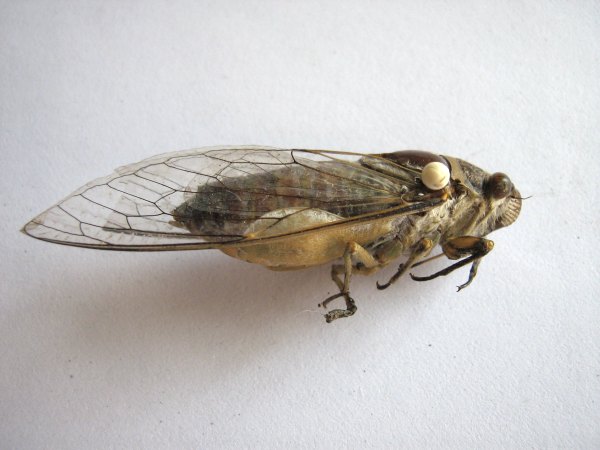
New cicada photos from Santisuk Vibul’s in Thailand.
Here’s something special. Roy Troutman has uploaded some HD quality videos of Magicicadas to YouTube. Click the links to see the full-size versions.
Periodical Cicada sitting on leaf in HD:
Periodical Cicada’s heart pumping in HD:
Here’s a Brood XIV Roy created as well:
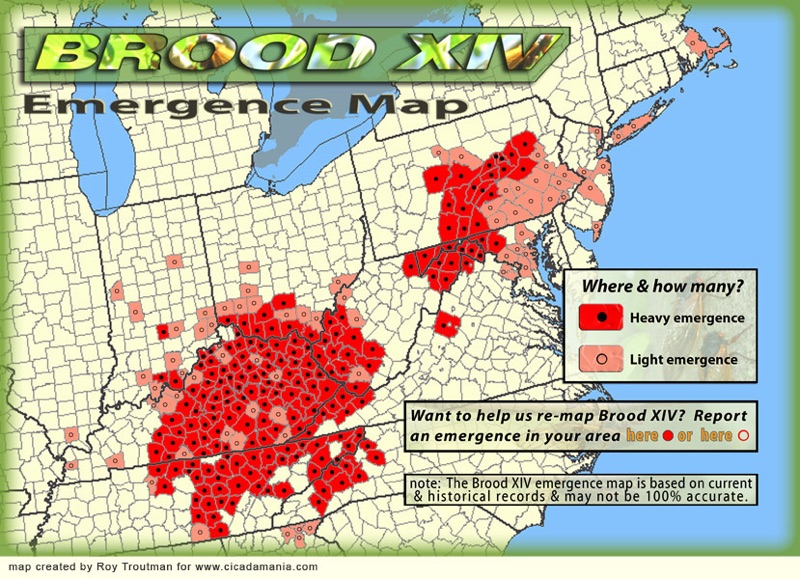
Lately, we’ve received quite a few emails asking for audio samples of cicadas and katydids so folks can A) tell them apart, and B) tell what species they are. There’s plenty of sites on the web that feature cicada sounds; look for links tagged AUDIO on my cicada links page. Two particularly good sites for sound files Massachusetts Cicadas and Cicada Central.
In my search for good cicada and katydid sounds, many people recommended the book “The Songs of Insects” by Lang Elliott and Wil Hershberger. I ordered it immediately, and it arrived today. I am truly amazed by this book (and audio CD). The book profiles 75 North American singing insects including cicadas, katydids, crickets, and grasshoppers. Each profile features two excellent color photos of each insect, a map of where you can find them, a description, and the audio CD that includes the insect’s song. The book is over 225 pages long, and a high-quality paperback. If you or your kids are interested in signing insects, there’s no better book to buy. All my nieces and nephews are getting this book for Christmas.
The authors of the book have a webpage featuring the songs of the insects featured in the book. Note that the book is lacking in species found in the western U.S. — if you live east of the Rockies this book is awesome.
Listing for bugs is a fun thing to do in these hot summer months — buy this book before the summer ends.
It is available on Amazon.com.
I recently found a book called A monograph of oriental cicadidae in the Internet Archive. The A monograph of oriental cicadidae was authored by W. L. Distant, and published in 1892 — that’s 116 years ago! The book contains plenty of text and illustrations, some of which I’ll include below:
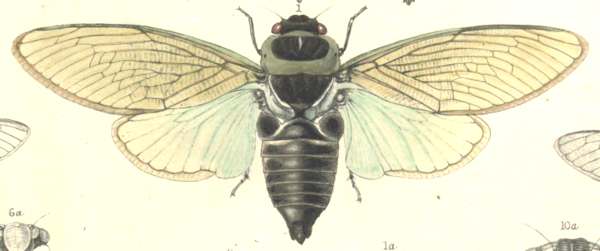
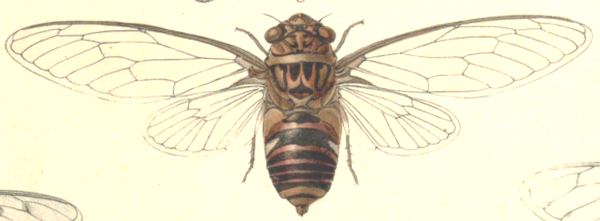
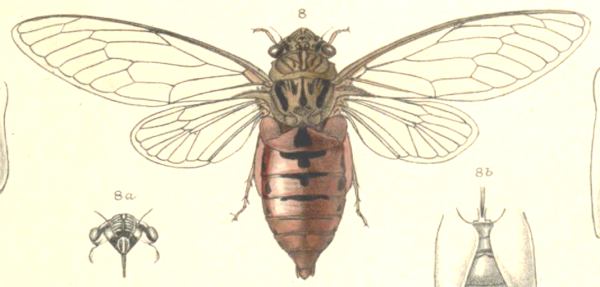
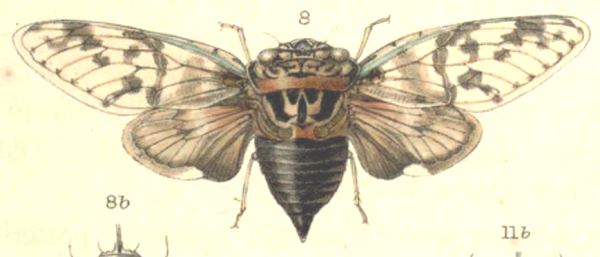
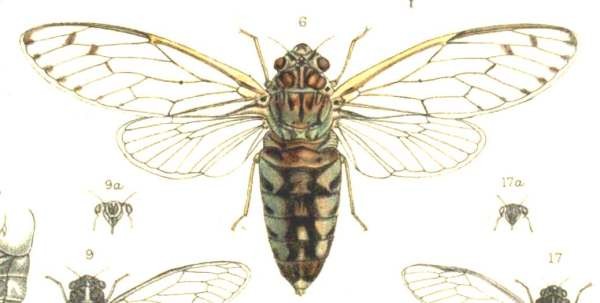
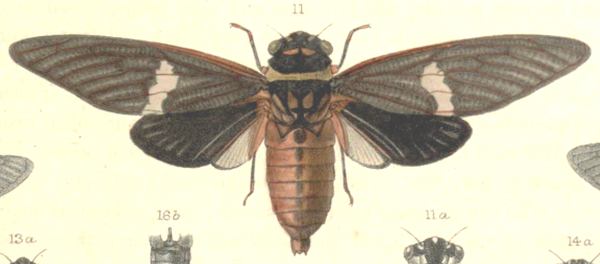
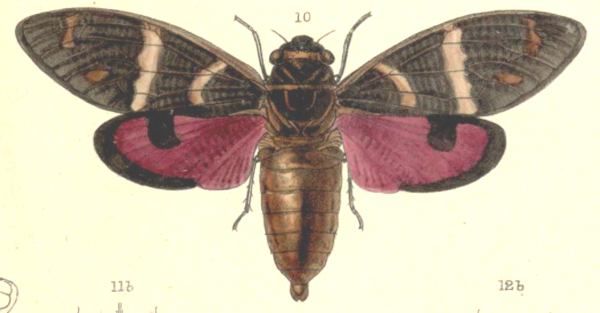
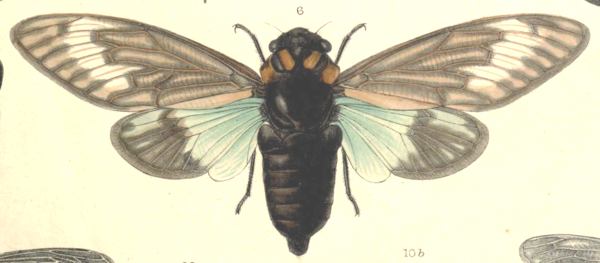
An excellent photo found on Flickr.
If you believe you’ve been bitten and you’re concerned, the best thing to do is to consult a doctor, not this webpage. 🙂
Technically cicadas don’t bite or sting; they do however pierce and suck. They might try to pierce and suck you, but don’t worry, they aren’t Vampires nor are they malicious or angry — they’re just ignorant and think you’re a tree. Just remove the cicada from your person, and go about your business. Cicadas also have pointy feet, egg-laying parts (ovipositors), and other sharp parts that might feel like a bite.
Cicadas don’t have jaws (mandibles) like a wasp, mantis, or ant, built to tear and chew flesh. Cicadas don’t have stingers, like bees and wasps, meant to deploy venom and paralyze or otherwise harm their victim. See a video of a Japanese hornet to see what I mean.
Cicadas obtain sustenance by drinking tree fluids, which are relatively watery compared to human blood. Drinking human blood would probably kill a cicada.
Caution: Don’t hold cicadas in a closed fist — you can hurt the cicadas, and they might try to drink from your hand meat.
(Reference these meme groups for more info Entomemeology and Wild Green Memes For Ecological Fiends).
Actual photo. Even with an open palm, they might take a taste!

Here is a video of a cicada that has confused my thumb for a juicy tree limb:
Magicicada trying to take a drink from Cicada Mania on Vimeo.
See if you can spot the cicadas sucker in this illustration:
Here’s a photo of a cicada’s mouth parts:
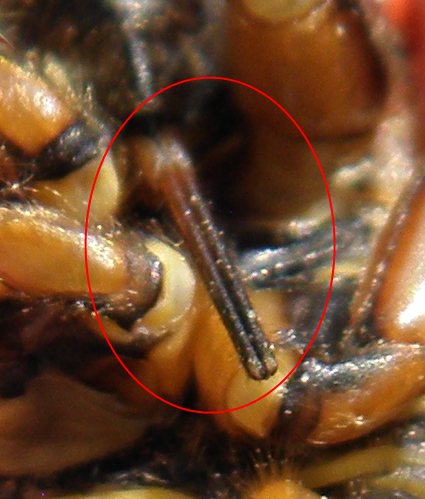
There is also a chance that if you believe you’ve been bitten by a cicada, you might have been bitten by a Cicada Killer Wasp. The Cicada Killer Wasp is a large wasp that hunts cicadas and usually can be found around cicadas or often attached to a cicada. Cicada Killer Wasps normally avoid humans, but if you mess with one, it might attack.
Tip of the day: If you want to avoid cicadas, don’t use power tools, drills, saws, lawnmowers, weed whackers, leaf blowers, etc. in their presence. Cicadas think the sounds made by these tools and machines are other cicadas. Female cicadas want to mate with the male cicadas they think they’re hearing, and male cicadas want to compete. If you can, use these tools in the morning or close to dusk when the temperatures are cooler, and cicadas are less active.
High-res versions of Roy Troutman‘s marble-eyed cicada photos. Fascinating. You can see a color variation in all 5 eyes!


Roy Troutman has obtained another marble-eyed 17 year cicada found by Mike & Reed Finfrock of West Chester, Ohio.
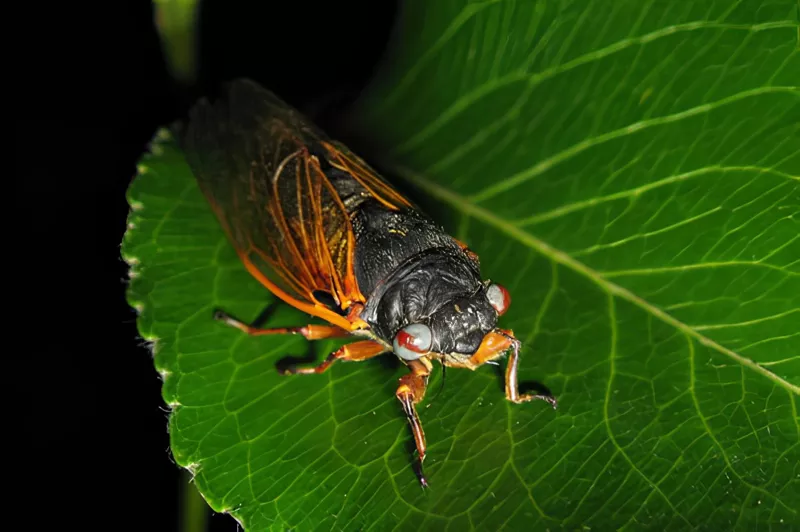
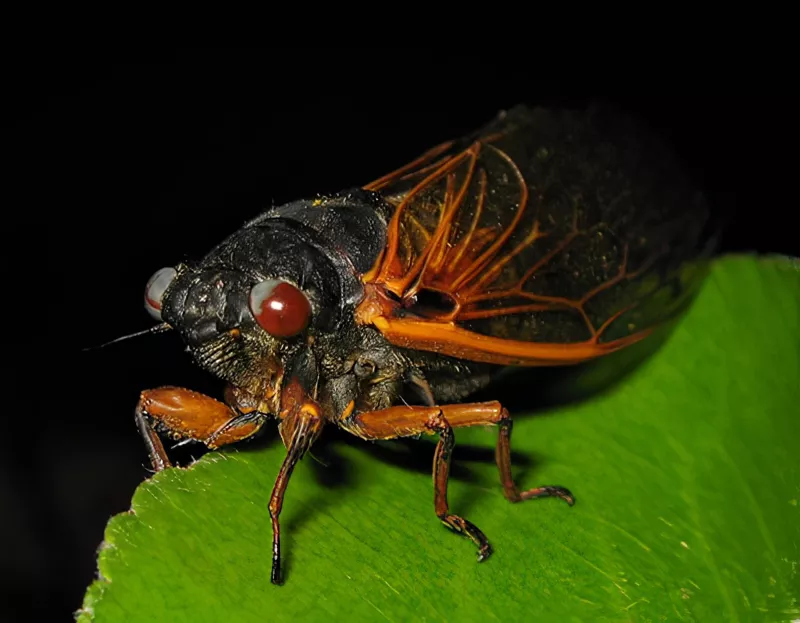
White eyes are unique, maybe one in 100,000, but these marble eyed cicadas seem to be even more rare. They look like the red was torn away, revealing the gray below (like something you would see on a blinged out Honda Civic or an 80’s metal guitar).